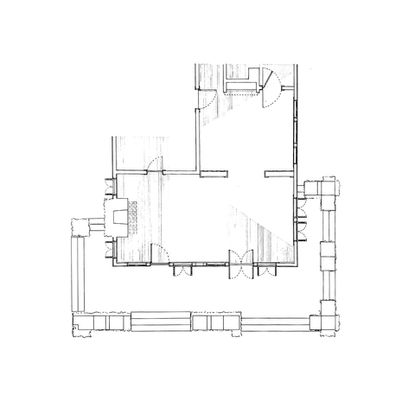MIAMI VERNACULAR PROJECT
“The word, Home, would bring up the whole history of our lives…we want that little word to stand as a symbol of creative life and constructive happiness. We want the word [bungalow]“belvedere” to mean a Florida home, a Miami home.”
J.S. Andrews Tropic Magazine 1916
One of the earliest references to the Miami bungalow can be found in a series of articles written in the Tropic Magazine published in Miami in 1916. The author extolled the convenience of the bungalow, specifically the airplane bungalow, as highly suitable and adaptable to Miami’s subtropical conditions. The bungalows were essentially a local adaptation of the Southern California bungalow. “The California type of bungalow built for warm climates with plenty of space, air and prominent screened porches was greatly favored” read an advertisement in the Miami News in 1921.
Miami’s “subtropical” bungalows introduced a new paradigm in residential design in South Florida. These “proto-modern” structures introduced the development and marketing of a concept of modernity in Miami that could be considered the precursor of Miami tropical homes of mid 1950s. Promoted as the “all -American family house” in contemporary publications, the mass-produced bungalow fitted quite well with the real estate boom during of the early 1920s. The widespread construction of bungalows in Miami signaled the beginning of one of South Florida first major demographic shifts. Its image appealed an expanding middle class and influx of newcomers arriving to America’s last frontier.
The bungalows efficient and economical building process (rapid construction, standardization, compact size) allowed builders to sell very quickly new subdivisions springing all over Miami’s new suburban developments. New cable car lines connecting those new developments with downtown Miami helped spur the growth of those subdivisions. The early 1920s signaled the heyday of the bungalow popularity in Miami. Numerous “tropical bungalows”, such as the Hubbard-Alvarez bungalow , documented by M.D.C. students, were built west of Miami downtown area, “Riverside Heights”, an area lying between N.W. 10th and N.W. 17th avenues and the Miami River on the north and Flagler street, was considered "a bungalow colony”. Miami's new subdivisions consisted mostly of bungalow types clad in different styles, ranging from the popularly known California craftsman to Spanish Mediterranean or Mission. These new “bungalow’ neighborhoods demarked an eclectic “subtropical bungalow” belt stretching out from North Miami, newly created subdivisions west of downtown Miami, and south to Homestead (JV).




